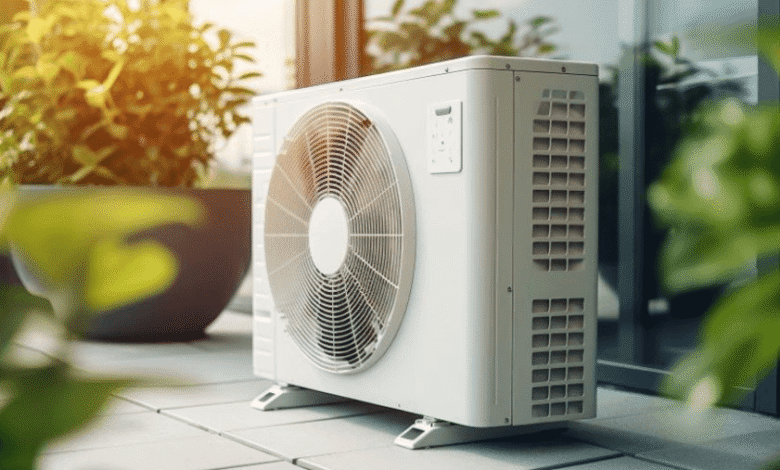Energy Efficiency Basics for Home Heating and Cooling

Cut your energy bills with small improvements to your HVAC system and home insulation. Energy efficiency isn’t just about upgrades—simple maintenance, smart programming, and better insulation can reduce waste while keeping your home comfortable. Learn the basics to make smart, cost-saving decisions.
Understanding SEER and HSPF Ratings
When shopping for new HVAC equipment, you’ll encounter efficiency ratings that determine how much energy your system uses. The Seasonal Energy Efficiency Ratio (SEER) measures air conditioning efficiency, while the Heating Seasonal Performance Factor (HSPF) evaluates heat pump performance.
Higher ratings mean greater efficiency and lower operating costs. Modern air conditioners typically range from 13 to 25 SEER, with units rated 16 SEER or higher considered high-efficiency. For heat pumps, look for HSPF ratings of 8.5 or above.
What These Numbers Mean for Your Wallet
A 16 SEER unit uses approximately 23% less energy than a 13 SEER system. Over a decade of operation, this efficiency difference can save hundreds of dollars in energy costs, often offsetting the higher upfront investment in premium equipment.
Regional Considerations
Climate plays a crucial role in equipment selection. Homes in hot climates benefit most from high-SEER air conditioners, while cold-weather regions should prioritize heat pumps with excellent HSPF ratings for winter heating efficiency.
Improving Insulation and Sealing Air Leaks
Your home’s thermal envelope—the barrier between conditioned indoor air and the outside environment—plays a critical role in energy efficiency. Poor insulation and air leaks force your HVAC system to work harder, driving up energy consumption.
Identifying Problem Areas
Common air leak locations include:
- Windows and door frames
- Electrical outlets on exterior walls
- Attic access points
- Basement rim joists
- Fireplace dampers
A professional energy audit can pinpoint specific problem areas using thermal imaging and blower door tests, providing a roadmap for targeted improvements.
Insulation Upgrades That Matter
Attic insulation offers the biggest return on investment for most homes. Adding insulation to achieve R-38 to R-60 (depending on your climate zone) can reduce heating and cooling costs by 10-50%. Wall insulation improvements, while more complex, can further enhance efficiency in older homes with inadequate insulation.
Simple Sealing Solutions
Weatherstripping around doors and windows, caulking gaps, and installing foam gaskets behind outlet covers are inexpensive fixes that yield immediate results. These small improvements can collectively reduce air infiltration by 15-30%.
The Importance of Regular HVAC Maintenance
Neglected HVAC systems lose efficiency over time, with dirty filters and components forcing equipment to work harder than necessary. Regular maintenance keeps your system operating at peak performance while extending its lifespan.
Essential Maintenance Tasks
Replace air filters every 1-3 months, depending on usage and filter type. Dirty filters restrict airflow, reducing efficiency and potentially damaging equipment. High-efficiency pleated filters capture more particles but require more frequent replacement than basic fiberglass filters.
Annual professional tune-ups should include:
- Refrigerant level checks
- Coil cleaning
- Electrical connection inspection
- Thermostat calibration
- Ductwork assessment
DIY vs. Professional Service
While homeowners can handle filter changes and basic cleaning, complex tasks require professional expertise. Professional air conditioning services like those offered in South Jordan provide comprehensive maintenance that addresses issues beyond typical DIY capabilities.
Well-maintained systems operate 5-40% more efficiently than neglected equipment, making annual service calls a worthwhile investment in long-term performance and reliability.
See also: Making a House Feel Like Home—Simple Home Improvements That Make a Big Impact
Smart Thermostat Benefits and Programming
Smart thermostats represent one of the most cost-effective energy efficiency upgrades available. These devices learn your schedule and preferences, automatically adjusting temperatures to minimize energy waste without sacrificing comfort.
Advanced Features That Save Energy
Modern smart thermostats offer:
- Geofencing technology that adjusts temperatures based on occupancy
- Learning algorithms that optimize heating and cooling schedules
- Remote access for temperature control away from home
- Energy usage reports that highlight consumption patterns
Programming for Maximum Savings
The 7-day programmable capability allows different schedules for weekdays and weekends. Setting temperatures back 7-10 degrees during 8-hour periods when you’re away or sleeping can save up to 10% annually on heating and cooling costs.
Integration with Home Automation
Smart thermostats often integrate with other home automation systems, enabling coordinated energy management. For example, they can work with smart window blinds to reduce solar heat gain or adjust temperatures based on occupancy sensors throughout the home.
Energy-Efficient Window Options
Windows significantly impact heating and cooling loads, particularly in homes with single-pane or older dual-pane units. Upgrading to energy-efficient windows can reduce energy loss by 25-30% while improving indoor comfort.
Understanding Window Ratings
The National Fenestration Rating Council (NFRC) provides standardized efficiency ratings for windows:
- U-factor measures heat transfer (lower is better)
- Solar Heat Gain Coefficient (SHGC) indicates solar heat transmission
- Visible Transmittance (VT) shows light transmission
Choosing Windows for Your Climate
Cold climates benefit from windows with low U-factors and moderate SHGC values to capture beneficial winter solar heat. Hot climates require low SHGC ratings to minimize cooling loads, while maintaining adequate visible light transmission.
Alternative Solutions
Window replacement represents a significant investment. More affordable options include:
- Storm windows for seasonal efficiency improvements
- Window films that reduce heat gain and UV transmission
- Cellular shades that provide insulation value
- Caulking and weatherstripping to seal gaps around existing frames
Government Incentives and Rebates
Federal, state, and utility incentives can significantly offset the cost of energy-efficient upgrades. These programs make high-efficiency equipment and improvements more accessible to homeowners.
Federal Tax Credits
The federal government offers tax credits for qualifying energy-efficient improvements, including:
- High-efficiency HVAC equipment
- Insulation and air sealing
- Energy-efficient windows and doors
- Smart thermostats
Credit amounts and qualifying equipment change periodically, so verify current requirements before making purchases.
Utility Rebate Programs
Many utility companies offer rebates for energy-efficient upgrades that reduce peak demand. These programs often provide immediate cash incentives for:
- High-SEER air conditioners
- Programmable thermostats
- Insulation improvements
- HVAC maintenance agreements
State and Local Programs
State and local governments may offer additional incentives, low-interest financing, or property tax exemptions for energy-efficient improvements. Contact your state energy office or local utility for information about available programs in your area.
Conclusion
Improve heating and cooling efficiency with simple steps like programmable thermostats and air sealing, followed by strategic upgrades based on your home’s needs. Regular maintenance and smart adjustments can lower energy bills, enhance comfort, and reduce environmental impact. Start with an energy audit to identify the best opportunities for improvement.





